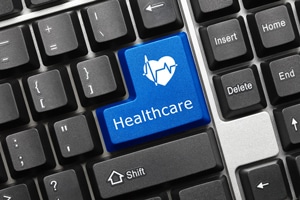March 20, 2017
Notable Trends In Healthcare Information Technology
By Michael D. Shaw
As was discussed in several media outlets at the time, the so-called revolution in healthcare IT promised a decade or so ago has not exactly materialized. In fact, much of the software—especially the electronic health record packages—is almost universally hated.
Thus, I was not exactly surprised to hear recently from a few sources that the scheme of things has changed. One wonky sort who prefers to remain anonymous speaks of a role reversal: Healthcare is now dictating to IT. Healthcare will be telling the IT pros that one size does not fit all; that healthcare’s needs won’t be solved with off-the-shelf approaches; and that the industry is a lot smarter about how IT can solve its problems.
My wonkish friend pointed me in the direction of a few trends…
1. Embracing the Cloud
Per Journalist and entrepreneur Melissa Jun Rowley, “If ever there was an industry in need of higher quality for less money, it’s the healthcare sector. In addition to the demand to improve operational efficiency, healthcare service providers are increasingly facing competition, which is putting the pressure on to do more for less. This is where cloud computing proves to be beneficial.”
Trade associations tout the Cloud’s space, economic scale, and universal reach, as well as it boosting interoperability—the extent to which systems and devices can exchange data (including x-rays and all scans), and interpret that shared data. Experts insist that interoperability provides patient and practitioner with a holistic understanding of the patient’s real-time status. Security issues are acknowledged, and are being dealt with at the highest levels. But then, any manner of data sharing and storage is subject to some risk.
2. Adopting some aspects of gaming culture
Consider wearable tech, which, according to wearable.com is something beyond headphones or a simple digital watch. The idea here is that these devices can be connected—usually to your smartphone, and are often provided with sensors. Applications range from fitness and dieting, to even monitoring blood glucose levels.
Interestingly, back in June, 2015, the Personal Connected Health Alliance announced a partnership with Games for Health. “Gaming technology is playing an increasing role in care delivery and the management of health and wellness,” said Richard Scarfo, Vice President, PCHA. “Gaming technology is becoming an important addition to social media, wearables, and mobile health, as well as an adjunct to clinical care management.”
3. Doing more with artificial intelligence
Everyone involved appreciates the immense amount of data being generated in healthcare. But, what can we learn from it all? How can it be used to improve outcomes? IT gurus suggest that artificial intelligence should focus on clinical results. Patient history and clinical theory can be mined for predictive analytics that direct treatment options, rehabilitative therapies, pharmaceutical responses, and holistic outcomes.
4. Connecting with patients as customers
Social media and other collaborative platforms are the new metrics for quality performance, keys to further efficiencies, and can jump-start continuous quality improvement. Consumers are telling providers what they want and how to deliver it. They’ve learned much from the Internet and expect to use its power. Patients feel entitled to their history and the records documenting it.
“One of the biggest issues with getting patients better engaged with their treatment has been managing the security of all that patient data,” said Hoala Greevy, Founder and CEO of Paubox. “But that’s no longer an excuse as technology has come a long way to make it easy to communicate, but maintain a high level of security.”
Healthcare IT News ran a small survey of 95 healthcare executives in October 2016…
“Asked which technologies they are planning to upgrade in 2017, 52 percent of survey respondents said security, 51 percent analytics, 44 percent patient engagement, 44 percent population health, 31 percent EHRs, 24 percent remote patient monitoring, and 22 percent revenue cycle management.”
Empowered by the Internet, patients expect information and choices. In short, they are fast becoming their own best healthcare advocates, and they want a role in their care. Technology must not fail them.

